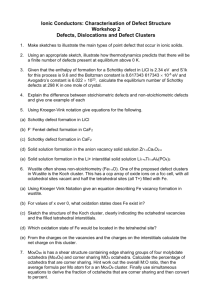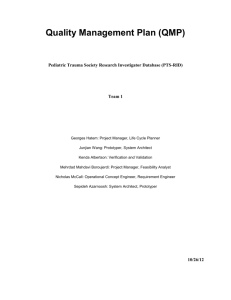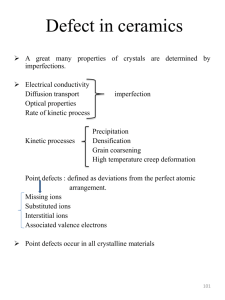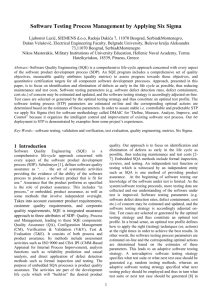Defect Tally Form
advertisement
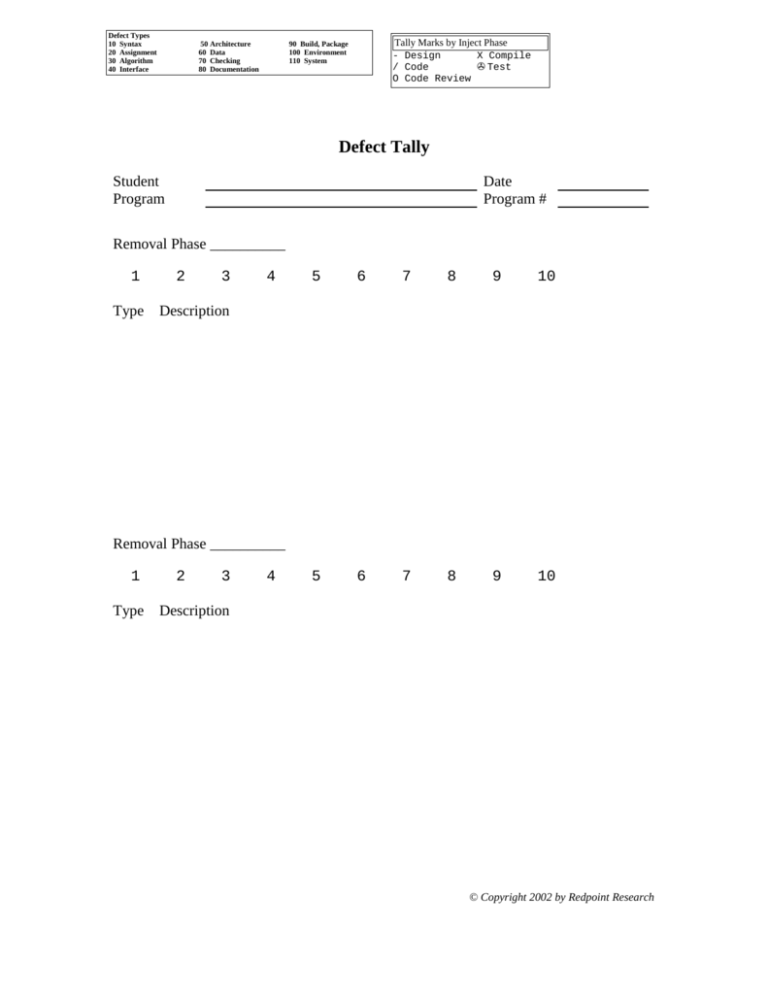
Defect Types 10 Syntax 20 Assignment 30 Algorithm 40 Interface 50 Architecture 60 Data 70 Checking 80 Documentation Tally Marks by Inject Phase - Design X Compile / Code ✇ Test O Code Review 90 Build, Package 100 Environment 110 System Defect Tally Student Program Date Program # Removal Phase __________ 1 Type 2 3 4 5 6 7 8 9 10 5 6 7 8 9 10 Description Removal Phase __________ 1 Type 2 3 4 Description © Copyright 2002 by Redpoint Research PSQ Defect Type Standard Type Type Name Number 10 Syntax 20 Assignment 30 Algorithm 40 Interface 50 Architecture 60 Data 70 Checking 80 Documentation 90 Build, Package 100 Environment 110 System Description Spelling, punctuation, typos, instruction formats Declaration, duplicate names, scope, data range, initialization of data. Errors in algorithm design; logic, pointers, loops, recursion, computation Errors in module interface design: procedure calls and references, parameter lists. Errors in architectural design; modularization, structure, coupling, cohesion. Errors in data design: structure, content Failure to properly validate data values before used; error messages, asserts. Source code comments, messages. Also external documentation. change management, library, version control, makefile error, etc. CASE tool, compiler, test, or other support system problems. Hardware and platform configuration, real-time resources, shared memory. © Copyright 2002 by Redpoint Research Defect Tally Instructions Purpose General Header Phase Tally This form holds a tally of defects you find during development. Use these data to complete the Project Plan Summary. Record all defects during unit development in this log. A defect is any change you made to the source code. Don't count error messages; Establish the underlying defect in the source code. These defects are NOT entered in the team's defect tracking system. If you need additional space, use another copy of the form. It is best to fill out the forms in pen or pencil. Don't bother to type them for submission. Enter the following: - your name - today's date - the program or module name - the number of the PSQ program Enter the phase during which the defect was removed. This would generally be the phase during which you found and fixed the defect. Keep track of the number of defects found by marking off a number in the list for each defect. Use your best judgment to determine the phase where the defect was injected and use the corresponding kind of tally mark shown below. Mark / X ✇ Notes Phase Injected Design Code Code Review Compile Test You may record notes about the defects you find. The kinds of data that might be useful would be data that normally is entered into a Defect Recording Log: defect type, description of defect, and fix time. © Copyright 2002 by Redpoint Research Example Defect Tally © Copyright 2002 by Redpoint Research


